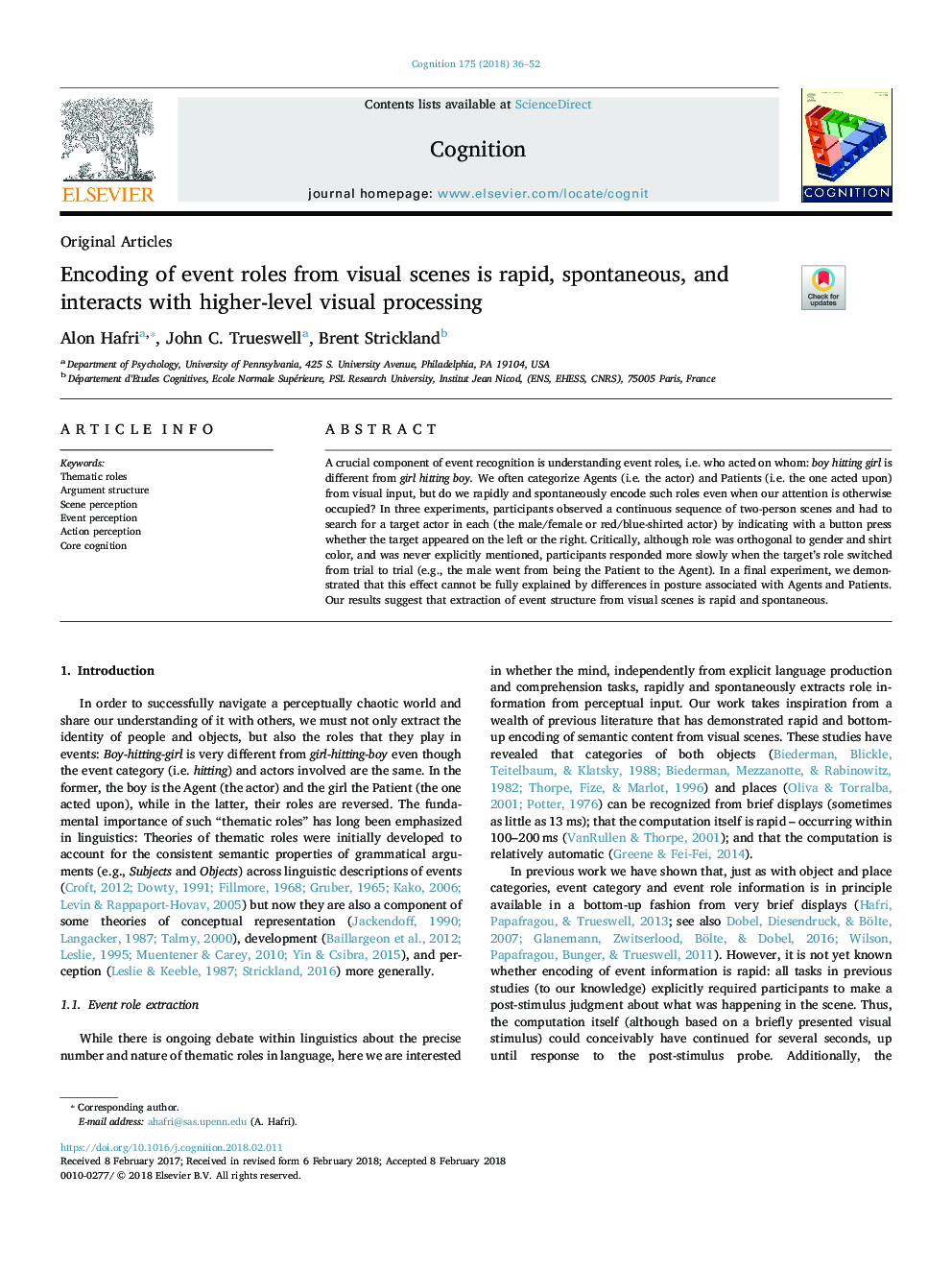| Article ID | Journal | Published Year | Pages | File Type |
|---|---|---|---|---|
| 7285330 | Cognition | 2018 | 17 Pages |
Abstract
A crucial component of event recognition is understanding event roles, i.e. who acted on whom: boy hitting girl is different from girl hitting boy. We often categorize Agents (i.e. the actor) and Patients (i.e. the one acted upon) from visual input, but do we rapidly and spontaneously encode such roles even when our attention is otherwise occupied? In three experiments, participants observed a continuous sequence of two-person scenes and had to search for a target actor in each (the male/female or red/blue-shirted actor) by indicating with a button press whether the target appeared on the left or the right. Critically, although role was orthogonal to gender and shirt color, and was never explicitly mentioned, participants responded more slowly when the target's role switched from trial to trial (e.g., the male went from being the Patient to the Agent). In a final experiment, we demonstrated that this effect cannot be fully explained by differences in posture associated with Agents and Patients. Our results suggest that extraction of event structure from visual scenes is rapid and spontaneous.
Related Topics
Life Sciences
Neuroscience
Cognitive Neuroscience
Authors
Alon Hafri, John C. Trueswell, Brent Strickland,
